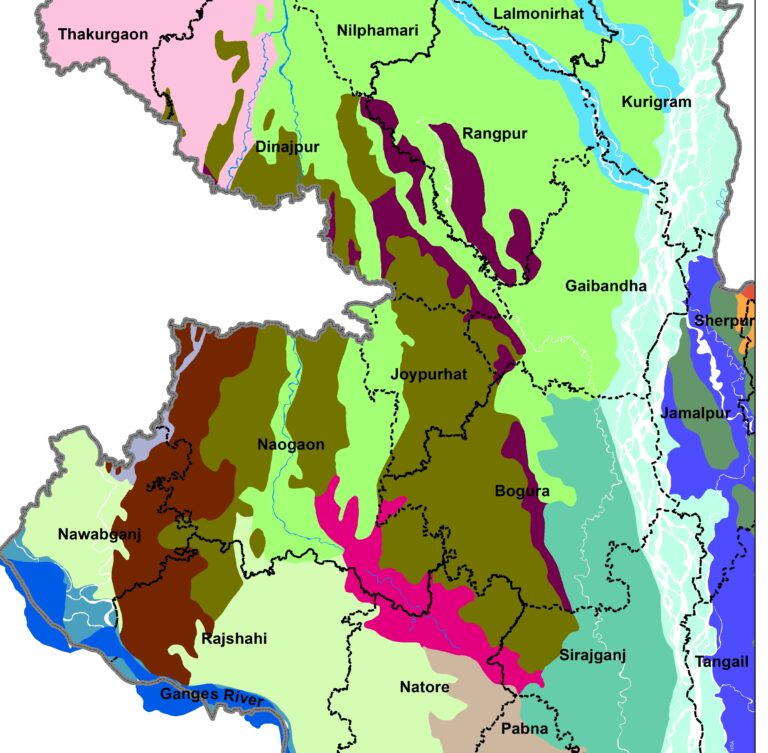Barind Tract
Agro-ecology of the Barind Tract
Barind Tract is one of the important agro-ecological zones in Bangladesh. It is located in the NW part. The largest physiographic unit of the Bengal Basin is considered as most drought-prone area. The zone can be categorized as High, Level and North-eastern Barind Tract.

Main River Flow in Barind Tract
This region is vulnerable to periodic drought and the drought has affected crop production regularly since the independence of Bangladesh. This means that there is a lack of water for cultivation. The main river lies in the area is the Ganges River, the parent of the Gorai. Discharge of the river decreases might have resulted in water scarcity in the region.

Barind Tract (Current Agricultural Practice)
Recent analysis shows that the mean annual temperature has increased by 0.0240C per year during 1971 to 2012. The maximum temperature rose above 35OC in April. The rice crop will reduce the crop yield considerably. Additionally, average rainfall during monsoon is declining (about 225 mm to 200mm during 1971 to 2010) which hampers the production of the T. Aman rice. This is due to the shortage of water and needs supplementary irrigation. Rice is the main agricultural products in the Rajshahi region.
Barind Tract (Practice by People)
People use GW for crop production to mitigate the scarcity of water for irrigation. In addition to that, farmers are using organic fertilizer. That helps soil to retain water and reduces the water loss which ultimately helps the growing of crops to cope with the drought condition. Some farmers have re-excavated the ponds to store rainwater to use them for irrigation purposes in the dry season.
Furthermore, local farmers are going for a crop diversification approach. The trend indicates that they are not relying on the rice as it takes more water. Rather they are going for low water demanding crops like Wheat, mustard, mungbean and chickpea in the dry season. The tendency of using limited resources is for the best profit by cultivating more than one crop at a time on the same land by irrigating the same amount of water. Besides, farmers are now diverting the field crops to mango, guava, papaya, banana and jujube orchard while some are planting short period based on Aus and T. Aman that requires less water.
